#willem dafoe interview
Explore tagged Tumblr posts
Text




The ‘Beetlejuice Beetlejuice’ Cast on Reuniting with Tim Burton
#monica bellucci#belluccidaily#dailywomen#monicabellucci#vanessa#userklaudia#flawlessbeautyqueens#userrobin#wonderfulwomendaily#breathtakingqueens#thequeensofbeauty#glamoroussource#glamorous#willem dafoe#beetlejuice beetlejuice#2024#*#gifs#interview#jenna ortega#michael keaton#justin theroux#femalegifsource#ladiesofcinema#tim burton#brunettessource#userthing#usersource#userlau#italiansedit
84 notes
·
View notes
Text



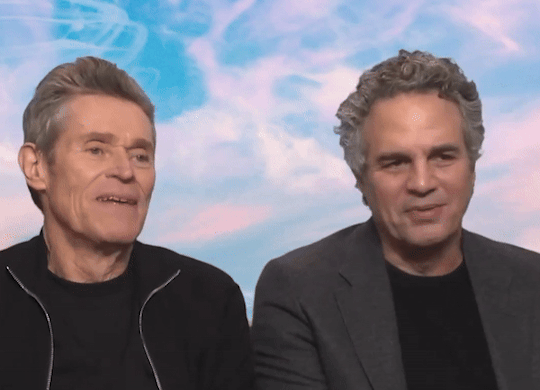
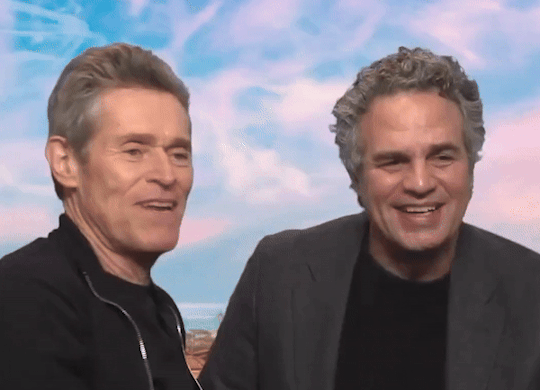

🕺🕺
#this cleared my skin#and cured my mental illness#lol#i do look at this a lot when i'm sad though#because it makes me really happy#so don't mind me blessing your dash#hope it brings as much joy#as it did to me#😁😁😁😁#poor things#interview#willem dafoe#mark ruffalo
269 notes
·
View notes
Text

#youtube#redlettermedia#red letter media#rich evans#jay bauman#gorilla interrupted#half in the bag#mike stoklasa#best of the worst#jack packard#nosferatu#i am something#willem dafoe#robert eggers#a24#focus features#dracula#bram stoker#bill skarsgård#vampire#vampires#vampyr#vampire movies#interview with the vampire#buffy the vampire slayer#vampire hunter d#the vampire armand#the vampire diaries#vampire the masquerade#horror
90 notes
·
View notes
Text
Every time I think of the Netflix Death Note adaptation, I want to punch a wall because WHY WOULD YOU WASTE WILLEM DAFOE LIKE THAT????????????
#has anyone else read that interview with him where he seemed so disappointed 😭#petition to let Willem Dafoe be in a good Death Note movie please#death note#netflix#willem dafoe
8 notes
·
View notes
Text
ANDREW GARFIELD and Willem Dafoe talk about the necessity of failure!
(Brave Productions)
#andrew garfield#willem dafoe#interview#video#amazing actors#peter parker#spider man#the amazing spider man#tasm#tasm peter parker#tasm peter#andrew peter parker#andrew peter#green goblin#spider man no way home#sincericida
39 notes
·
View notes
Text



9 notes
·
View notes
Text
Based on a 1992 novel, Poor Things is the story of a Victorian era woman who, after her suicide, is brought back to life by a scientist played by four-time Oscar nominee Willem Dafoe. Between the film's unique plot, a great performance by Emma Stone, and the vision of director Yorgos Lanthimos, Dafoe says Poor Things deserves all of the accolades it's gotten so far.
Poor Things is now showing in selected theaters.
#willem dafoe#Poor Things#Poor Things movie#Emma Stone#Yorgos Lanthimos#Movies#Movie News#Entertainment#Entertainment news#Celebrities#Celebrity#celebrity news#celebrity interviews
18 notes
·
View notes
Text

66 notes
·
View notes
Text
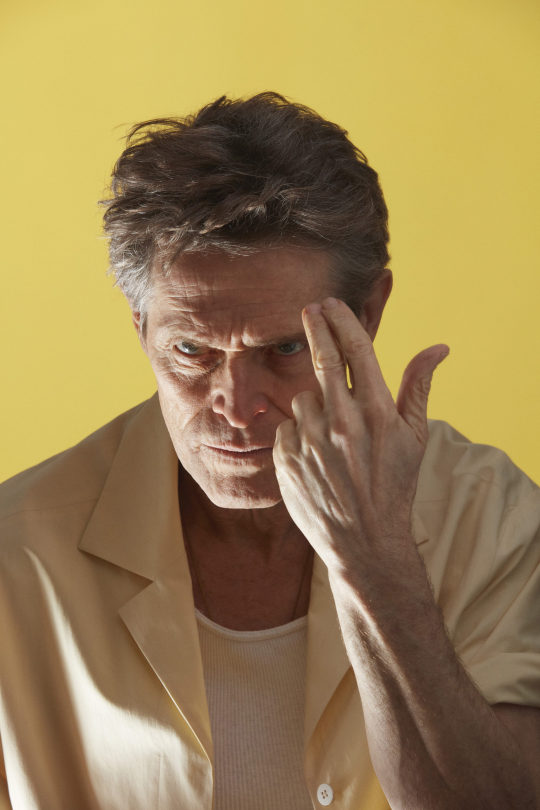



Willem Dafoe photographed by Roe Ethridge for Interview, 2022
88 notes
·
View notes
Text
NOSFERATU
“Still, he couldn’t totally temper his excitement over being back with Eggers. “He gets better and better and better, gets more articulate, more on top of it,” Dafoe said. “He’s so clear when he works. It opens in December of next year, which is a long time away. Trying to be an optimist, I think the studio must feel very strong about it, because that’s quite a tough slot, so I’m excited about that. I saw some footage when we were shooting, and I can honestly say, visually, it was like unlike anything I have seen. … The look of it and how it was shot was extraordinary”.
“Of his role, Dafoe said he’s playing “kind of a Van Helsing type of character, but not exactly. So he’s true to the source in some ways but also invented in some ways. I don’t know what else to tell!” OK, fine, a little bit more: “To see Lily-Rose Depp in some of those costumes, and some of the men, Ralph Ineson or Nick Hoult when they get in full [costume], it’s like they stepped out of a painting of that period. The look is very beautiful. I haven’t seen [final] footage, I’m going to ADR on some this week, and I’m looking forward to it.”
Some insights from NOSFERATU movie that is settled to release Christmas Day next year
8 notes
·
View notes
Text
i cant stop thinking about that willem dafoe clip of him saying “Hes gay but he has a special connection to classical music”
#that particular interview and audio clip live in my head rent free#willem dafoe lives in my head rent free
6 notes
·
View notes
Text
This man is so wholesome in this interview. It's so precious. 😊😍
#i love him#he's so precious#precious old man#you can tell he had a blast playing this new character#and his joy is so infectious#what a cutie#interview#video#video clip#i clipped his parts for your viewing pleasure#you're welcome#beetlejuice beetlejuice#wolf jackson#willem dafoe
43 notes
·
View notes
Text
First appearing in Sam Raimi’s 2002 Spider-Man, Dafoe stole the show as Norman Osborn, aka the Green Goblin. His acrobatic performance was part Jekyll and Hyde and part Gollum, an electrifying dual role in which Norman — after injecting himself with an unstable performance-enhancing chemical — is caught in a battle between a psychopathic, dark half and his regular self. Dafoe was so good that he would return in Raimi’s following two Spider-Man sequels, albeit in brief appearances hamming it up through a mirror.
19 notes
·
View notes
Text
Same energy


33 notes
·
View notes
Text
OBJECTS OF DESIRE - INSIDE by Vasilis Katsoupis
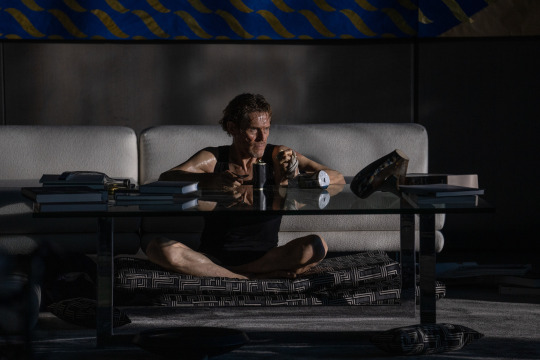
We talked to Greek director Vasilis Katsoupis about his feature film debut INSIDE, starring Willem Dafoe as an art thief.
What was the initial spark for INSIDE? Did you want to make a heist movie or a film about art? The idea for the film came after my studies, when I first went to New York. These huge buildings and all this stuff, this is where the idea sparked. The heist element came later. The initial idea was someone stuck in a penthouse. The heist element came to make a narrative for the film. But from the beginning I wanted to have a very well-designed penthouse full of artworks and objects of desire. Because I really wanted people to get goosebumps for everything that he destroys. Before my bachelor degree, I studied the history of art, and that that was something really new for me because in the Greek high school and curriculum there's no any mention of the history of art, at all. That sparked my fascination with the art world.
Nemo, the thief played by Willem Dafoe, uses the art in the film like a tool, like a caveman. The art becomes a way to break out and at the same time he's becoming something of a primitive artist himself. He not only turns shamanistic but transforms the setting around him, from a normal beginning to an almost religious or spiritual ending. How did the story change over time? From the very beginning, I said it is a project that I don't want to write. I had a timeline. I had a treatment. I had all of this. And then Giorgos Karnavas, the producer, found the writer Ben Hopkins. We talked with Ben, and he found it very challenging to write the story because there's no dialogue. He's a great writer, a great director, and he's an amazing collaborator. So he made a fantastic treatment in order for us to get development money from the European media fund. And this is how it started. If you read the script, it's a very beautiful script. It puts you inside the story, you can smell, feel the story. He writes it like literature. It's amazing how Ben makes you see the film.
How much was planned in the preproduction, how much improvised? It was difficult for me to do the storyboarding because there was no location. The only thing we had from the location was a SketchUp, a model. The production designer Thorsten Sagel had a friend, a computer genius. He took this model and put it on an Unreal engine so I could make some screenshots and have a dummy of the place. We flew Steve Annis, the DoP, to the office in Greece and we storyboarded together through this thing, Steve is a very experienced and amazing DoP. Because we were shooting in the studio, he made a set of lights that we could change very, very quickly. Mainly the light was coming from outside the building. Rarely, maybe in one scene, he put lights inside. So everything was achieved by using he security lights around the house. We built these lights in the corner of the house and practical lights and some soft stands outside of the screen together with the projection.
It's one of those projections where you already see the city in the studio, not a green screen, right? It was front projection, yeah. That was something I really wanted from the beginning. First of all, it works perfectly with the actor in order to perform. The actor feels the day, the night. It's completely realistic where he works. Secondly, it could be a hell in post-production to do the green screen through glasses. It looks really good now but it was something that worried me until the premiere in New York. It was funny when New Yorkers came to me there and said, where is this? Who lets you destroy their penthouse? When you get that from real New Yorkers, when they think it's a realistic place, it worked. It worked because Thorsten made a fantastic set.
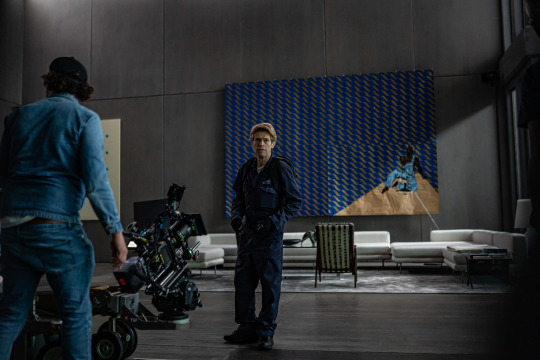
Was there a real ceiling? The center piece was removable. You can take It down where the light comes out. The ceiling was fixed but it was, and this is how clever Thorsten was, made of fabric. Very, very light. So it looks like cement, but it's fabric. It's amazing.
How much time did you have to plan and to build? We talked a lot a year before the start because we were developing and waiting for money. We talked a lot and exchanged ideas, and then we built it. To make the tower was also very difficult. Don't forget that all the set had to be waterproof because it gets flooded. There were many elements that we had to overpass. To shoot chronologically helped the performance so much. It helped to sculpture the character and the personality of the protagonist. Because neither me nor Willem wanted for this character to have a backstory. It would be this character getting trapped, and from that, we start understanding this person: Who is it? To shoot chronologically is a luxury for many fields. For us it was inevitable because everything was getting destroyed as the film progresses. But we were very, very careful with continuity. At the end of the day, when we edited the film, we saw that we were overly careful with the continuity because everything's getting in a time warp, and you don't care what's going on. So that was really good, but it was good that we were extra careful with the continuity. The problem with shooting chronologically is that you cannot go back. If you find out that something is not working or something is destroyed, you cannot go back and reshoot it. But that was the pact I made with Willem. I said to him, we have a beautiful script but from the moment we get to the set we can follow the script but there will also be thousands of things that will come to our mind and for us to try. There is 40% in the film that is not scripted. And this is why I love Ben, because his script gave us this freedom.
Was the Macarena song in the script or something you chose? It was in there from the first drafts. When we were doing the film, it was something I wanted. Mainly because it's a ridiculous song, and second, because the building is trolling the protagonist. But also because it's a song that the American Army uses to befriend the enemy. And I guess it works also as a torture device.
youtube
You obviously have many artworks in the film.They are objects of desire that later become tools for escape but they are also status symbols for the owner. What were the criteria you discussed with the curator who made the selection? Leonardo, the curator, was found by the producer, Giorgos. It was something I really needed. We found him last minute. He then had three or four months to make this collection, and that was a really difficult task. I talked with Leonardo about the characteristics and the personality of the owner who conceived this collection. I had done my research but my collection was very scattered. It wasn’t a believable collection. So he had to make the collection realistic. Because if it wasn't, we were to have the backlash of the whole art community that we really wanted to have in on our film. And it happened to many films before, when they just use lookalikes.
It’s true that art often looks bad in movies. There’s something that quickly can make it look quite cheesy through the camera lens. Yeah, if it's not real. It is very difficult. I think it’s maybe the first time that this happens in cinema, that you have a collection of contemporary artists that are alive. It's fairly easier to get art from artists in institutions, where you just go and get a license. But when you have people that are alive and still work like Cettelan, like Clemente, all these huge artists, then it’s not so easy to convince them. Because they need to be convinced that their artwork will be well-treated. It was a risk for them as well. And only to make the contracts of how the art will be treated was a huge project by itself. It's a big conversation.
What's your view about this kind of collecting and the art market? I don't know so much about collections and collectors. I wish that all the artworks would be accessible to the public and not hidden in a vault of some multi-billionaire in Japan. I don't understand why something should be evaluated a hundred million. It's good for the artists that are alive to get to make work. But I really don't understand why a Francis Bacon picture is worth 50 million, as much as I adore it. It works like the stock market. It becomes an investment. It is a way of some rich people to wash money and not pay taxes. But at the end of the day, art is a creation. So it'll be there even if the stock loses valuation.
The way Nemo comes into the apartment and then uses the art as a means of escape also talks about the value of art in a time of crisis. The art becomes a piece of paper or wood and has no representative value anymore. Is that something you were thinking about, how art changes its worth in different times? Inevitably. I think that’s how it works at the end of the day. It's a canvas and paint. For me, there is one scene in cinema that also worked very much not so much as a reference but that was inspirational for me. It’s in a film with Peter Sellers, THE PARTY. There is a scene where he goes to the bathroom and the toilet paper clogs the toilet. And behind the toilet there is a beautiful painting by Chagall. It falls inside the bowl, and he takes it out and takes some paper to clean it. If you know whose painting it is, you see it with different eyes. The value of the same painting changes by how it is perceived by the viewer.
It reminds me of the time a person washed a Jesus painting in a church and the religious painting started to look like a cartoon. At the same time, this comic figure is probably so famous now and iconic on its own terms that it might be just as valuable as the original, or even more. Leonardo told me that there are collectors that have their collection in their living room and maybe the kids go and play with the artworks. Others find that an artwork should be adored and praised like a holy grail. It changes with time. But if you ask me, I wouldn’t let any kids play with it. (Laughs.)

Nemo is transforming a lot in the film, physically but also spiritually. What’s his journey, is it a kind of catharsis for you? Does he go insane or does he find the destiny he was supposed to find? Is it connected to his background? There was just a little hint about a sketchbook in his past. When Willem talks about the character, he says he doesn't go insane. And I believe that he doesn't go insane as well. When you are alone for so many days, it's not insanity that hits you. It's that you are uncomfortable. Then malnutrition comes because he doesn't have any food anymore. So he’s just in a bad situation, physically, organically. But I don't know if there is a catharsis in all this. I've never thought like this. For some reason, I just observe him rather than trying to drive him somewhere.
I like the fact that it's not openly about someone with a backstory wound and then through a process of crisis gets healed from it. It's something that often really annoys me. Do you remember a film like GRAVITY with George Clooney and Sandra Bullock where they are trapped in space? I haven't seen it. But someone told me about GRAVITY and they told me that what they didn't like about GRAVITY is that you have the protagonist always talking, explaining what she is doing, something that we really didn't want to happen in our story.
I thought of this movie because Bullock’s character is trapped in space, and she gets out of it, but in the end it is mainly about her overcoming the trauma of losing her child. So the whole thing becomes reduced to that, that she finds life again. You make a movie in space with so much spectacle but thematically it seems very limited in the end. When you start talking about a film, especially with the screenwriter, he asks you, okay, what's the backstory of the protagonist. And I was telling Ben, I don't care about backstory. There is no backstory to this guy. We only care about him when he's inside. No backstory. For me, the audience should reflect on this character. After that, we had the first meeting with Dafoe. Giorgos, the producer, told me, look, man, the first thing Willem will ask is the backstory of the character. This is what all actors ask before talking about a role. And I said to them, there is no backstory. I don't give a fuck. But they were no, no, no, we really have to think of something, if he asks, we have to answer. So I spent the whole day before the meeting with Ben and Giorgos and we made up a backstory. And we go and meet Willem and we start talking. He had already read the script. I show him the mood video I made, my presentation. He really likes it and he says, guys, I'm Nemo. There's no reason to look further, I want to do it. And we are all happy. And, and at that moment, I say to Willem, look, let me tell you about the backstory of the character. And he goes, no, no, no, no. Don't tell me anything. I don't want to know about that. Because if you tell me, I have to play this character. So this is what you say about GRAVITY. The same thing, that then, you have only one dimension for the whole narrative. This is what I liked about Willem. We were on the same page from the beginning.
Vasili, thank you for the interview.
INSIDE is out in Greece and the US.
German theatrical release is on March 16th 2023.
5 notes
·
View notes
Photo

Interview: Leonardo Bigazzi on Curating the Art in Director Vasilis Katsoupis’ New Film, “Inside” The contemporary art curator explains how a character was born from a collection of artworks As viewers attempting to estimate the value of a film, we often hone in on the nuance of performance, the depth of the story or the role played by cinematography and the style of the visual language. For Inside—a profound feature-length film, co-written and directed by acclaimed Greek filmmaker Vasilis … https://coolhunting.com/culture/interview-leonardo-bigazzi-inside/
#Culture#Art#Art Curation#Curation#Curators#Films#Fondazione In Between Art Film#Interviews#Leonardo Bigazzi#Movies#Vasilis Katsoupis#Willem Dafoe#David Graver#COOL HUNTING®
0 notes